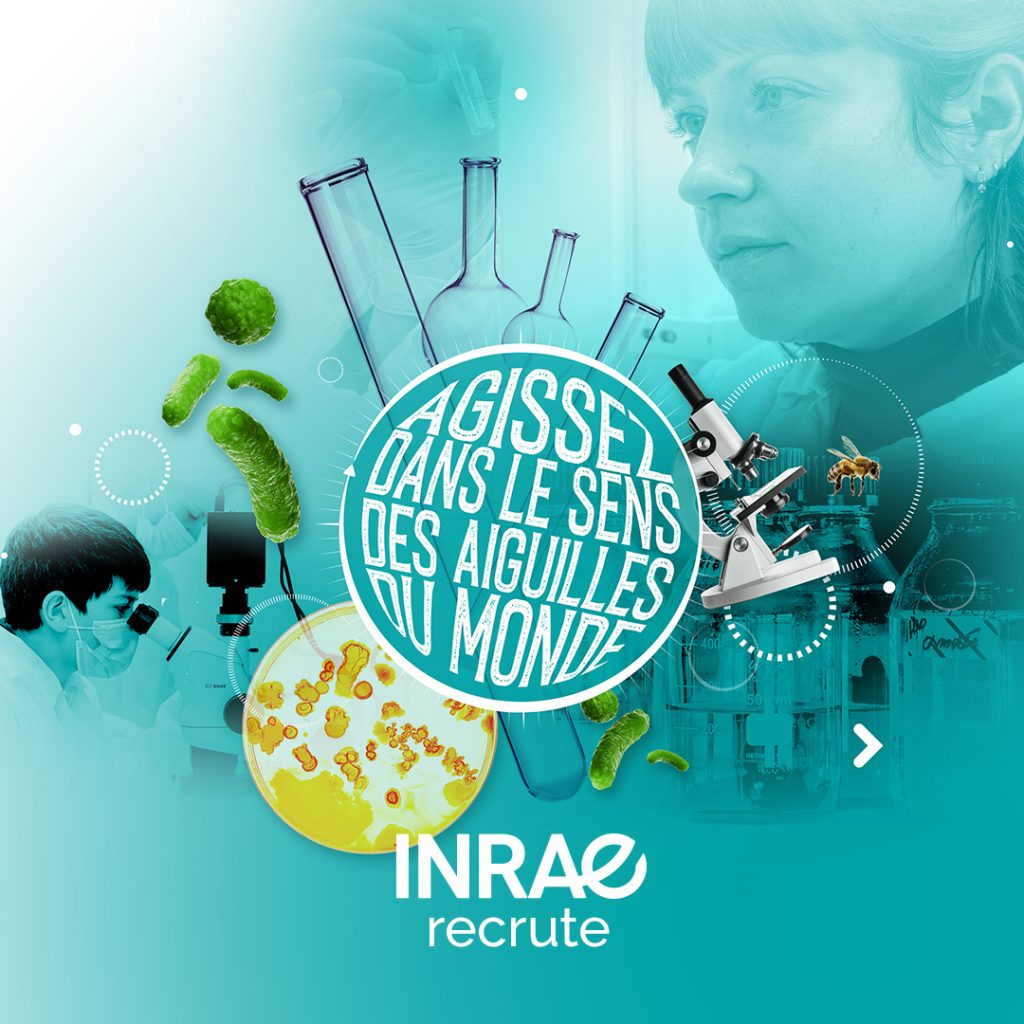

phd Proposal : Tannins and Oxidation in model-real matrix containing Protein, H/F
Référence : 2024-1541265
- Fonction publique : Fonction publique de l'État
-
Employeur :
Institut National de Recherche pour l'Agriculture, l'Alimentation et l'Environnement (INRAE)
INRAE - Localisation : LE RHEU
Partager la page
Veuillez pour partager sur Facebook, Twitter et LinkedIn.
- Nature de l’emploi Emploi ouvert uniquement aux contractuels
-
Nature du contrat
CDD de 3 ans
- Expérience souhaitée Non renseigné
-
Rémunération Fourchette indicative pour les contractuels 2100€/mois € brut/an Fourchette indicative pour les fonctionnaires Non renseignée
- Catégorie Catégorie A (cadre)
- Management Non renseigné
- Télétravail possible Non renseigné
Vos missions en quelques mots
Socio-economic and scientific context:
Vegetal matrices have rising interest from the agri-food sector as promising alternatives for the food transition. To reach agroecological concerns, plant production in low input systems will rely on increase plant defense toward both a-/biotic stressors. Such situation will trigger increased polyphenols and pathogenesis related proteins content in plant products. The polyphenolic and especially tannins susceptibility to oxidation associated to the enriched proteic content will favored interaction establishment during transformation steps (flour, isolates…). Polyphenols oxidation lead to quinone formation that interact with proteins through covalent (irreversible) and non-covalent (reversible) bounding. Even if some polyphenol-protein interactions might benefit to technico-functional properties, it also can led to off-flavors. Despite their major effects on polyphenol-protein interactions, neoformed tannins structure remained poorly known
Assumptions and questions
What is the structure of newly formed tannins through oxidation process? Are the new structures dependent on the proanthocyanidin starting structure (extension unit nature, degree of polymerization…)? How do these structural changes resulting from oxidation of proanthocyanidin modify their ability to form complex/conjugates with proteins? What are the determinants of the interactions
(non-/covalent) depending on the matrix composition and food processing steps?
The main steps of the thesis and scientific procedure
The first objective is the better understanding of the oxidation reaction on condensed tannins and thus the effect of the matrix composition (pH, temperature, pression…) on neoformed structures. The approach will be based on non-targeted LC-HRMS of vegetal matrix originated from agri-food transformation steps in the way to find oxidized tannin biomarkers. Proteins matrix differences (quality/quantity) will enabled to have a glimpse on the proteins impact on the proanthocyanidins reactivity towards oxidation. Then, a design of experiment will focus on proteins and non-/oxidized proanthocyanidins select according case of study (legume crops, astringency and salivary proteins,
allergenicity, beverage fining…). This approach in model solution will provide a better understanding on mechanisms and determinants of polyphenols-proteins interactions and resulting structures through non-/covalent bounding. Finally, chemometrics analysis on model solutions will confirm biomarkers revealed through the LC-HRMS profiling of processed vegetal matrix
Methodological and technical approaches considered
- Non-targeted metabolomics matrix analysis: UHPLC-DAD-HRMS (Exploris 240, Orbitrap)
- Conduct and monitoring of polyphenols’ oxidation in model solution
- Polyphenolic screening through both direct and depolymerization: UHPLC-DAD-MSn (LTQ-XL)
- Fluorescence spectroscopy, microcalorimetry, electrophoresis
- Chemometrics (PCA
Profil recherché
Scientific and technical skills required by the candidate
Analytical chemistry and chemical reactivity knowledge and experiences as well as in vegetal biochemistry and properties in food. Desired experiences on separative and MS techniques on vegetal matrix. Skills in high throughput data treatment ans statistics. Ability to work in team and in project mode, writing and communication skills (English, willingness to perform / learn French

Éléments de candidature
Personnes à contacter
- sylvain.guyot@inrae.fr
- kevin.billet@inrae.fr
Qui sommes-nous ?
NOTRE AMBITION : AGIR POUR LA VIE, L’HUMAIN, LA TERRE
Premier organisme de recherche spécialisé au monde en agriculture, alimentation et environnement, INRAE est né le 1er janvier 2020 de de la fusion entre l’INRA et IRSTEA. Nous sommes une communauté de travail de 12 000 personnes, avec plus de 200 unités de recherche et une quarantaine d’unités expérimentales implantées dans 18 centres sur toute la France.
Notre Mission ?
Face à l’augmentation de la population, au changement climatique, à la raréfaction des ressources et au déclin de la biodiversité, INRAE construit des solutions pour des agricultures multi-performantes, une alimentation de qualité et une gestion durable des ressources.
Pour répondre à ces grands enjeux mondiaux, nous avons besoin de renfort dans nos équipes. Des métiers de la recherche aux métiers de l’appui, l’INRAE recrute à tout niveau de diplôme (du CAP/BEP à Bac+8) !
Rejoignez une communauté engagée et agissez pour l’intérêt général !
À propos de l'offre
-
Vacant à partir du 01/09/2024
-
Chercheuse / Chercheur



